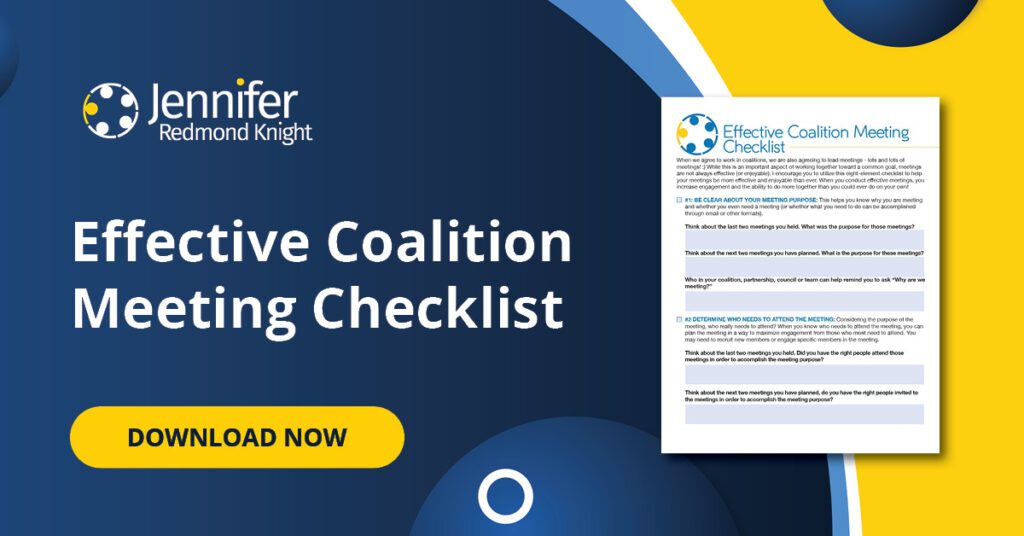One of the most common meeting expectations that rarely actually happens is the idea of “start on time; end on time.” Last weekend I provided training on group dynamics and one of the questions was related to what to do when we participate in or lead meetings that do not actually start on time or end on time. First, we need to ensure that the group we are leading actually wants to abide by this meeting guiding principle. If the leader wants to start on time and end on time but the group’s “norms” are something different, then this may not be a realistic or supported guiding principle. Alternatively, if this is something that most members of the group find important, then we need to find a way to practice this principle and honor the participants. Join me this week as I provide three practices that will help us implement our meeting guiding principle: Start on time; end on time.
Be clear about expectations.
One of the most important aspects of leading meetings is to set expectations for the meetings. As I have mentioned many times, being clear about the meeting purpose is one of the most important things you can do to host an effective meeting. Once you are clear on your purpose and who needs to attend, then you can consider the logistics related to how long the meeting needs to be to accomplish the purpose. Once you have done that, you are able to move toward considering the start and end time of the meeting. Based on previous meetings, we may assume that the start time is not really the start time and we can join a few minutes late and not miss anything. If we are going to implement the guiding principle related to start on time; end on time, we need to communicate those expectations prior to the meeting, during the meeting and as you prepare for your next meeting. Rather than assume everyone knows the expectations, be sure to specifically emphasize the importance of starting on time and ending on time. You can also communicate that the meeting will begin, and even though you understand some people will not be able to make it on time, you will begin the meeting as planned.
Be realistic about the agenda.
When you are planning a coalition, partnership or team meeting, you often want to accomplish a lot of things in one meeting. While you want to maximize the time with your group, if you are trying to do too much during the meeting, you will really struggle with ending a meeting on time. I’m currently helping plan a coalition meeting that is supposed to last 1.5 hours. As our team has worked and re-worked the agenda, we are still struggling with trying to do too much during this timeframe. When this happens, we will inevitably struggle with ending our meeting on time. If you are someone (like me 🙂 who often underestimates the amount of time each part of the agenda will take, then ask for feedback from other staff or leaders on what they think may be realistic in a specific timeframe. When you carefully evaluate your purpose and your proposed agenda, you can make adjustments that will help you move toward ending on time. As you plan your meeting, you may realize that you need to plan two meetings in order to effectively accomplish your purpose. If you want to practice the guiding principle of starting on time and ending on time, work closely with your team to be realistic about your agenda.
Set boundaries on your meeting.
One of the most common challenges with starting a meeting on time is that we do not want to leave anyone out of the meeting. When we wait for everyone to join, we inadvertently create missed opportunities to begin engaging with the people who are in the meeting. When we wait to begin, we also provide an opportunity for those who are already there to get distracted and not join us when we are actually ready to begin. Additionally, when we are in a meeting that is taking more time than expected, we are automatically going to be late to our subsequent meetings. On some of my busy meeting days, if I do not end my first meeting on time, then I am late starting and ending every other meeting of the day! In order to respect the participants in each group, practicing the principle of starting on time and ending on time means that we have to set boundaries on our meetings. If we practice starting our meeting on time, then we are setting a boundary that demonstrates we are going to begin the meeting with whoever is with us. In order to end the meeting on time, one of the best methods is to leave the last five minutes as wrap up and next steps. Even if you are in a really great discussion during those last five minutes, encourage participants to take notes related to their ideas and be ready to continue the discussion during the next meeting. By leaving five minutes at the end for a clear wrap up and next steps opportunity, then you are much more likely to end your meeting on time.
As you plan your next meeting, check out my free resource, Effective Meeting Checklist. This will guide you through specific questions to ask and steps to consider!

Photo by Icons8 Team on Unsplash
